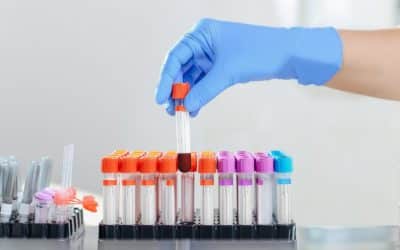
As we get older, our bodies, and our cells specifically, become less able to deal with the nutrients we consume.
Most of us eat three meals per day, leading to a lot of sugars (including from starches), amino acids (from proteins) and fats entering our bloodstream. All these substances need to be properly processed by our body, which will convert them into energy, building blocks, or secrete them via the gut, kidneys or lungs. But as the decades of our lives pass, our cells become less able to do this.
Aging and insulin resistance
As a starter, as we grow older, our cells become more insulin resistant. This means that our cells become too numb to insulin. This is a big problem, because insulin is a hormone that nudges cells to take up and process the sugars that circulate in our blood after a meal or drink containing sugars or starches (which are made of long chains of glucose).
When these sugars are not properly taken up by specific cells (especially liver and muscle cells), they keep circulating at too high levels in the blood, eventually damaging other cells, such as brain cells, nerve cells or kidney cells, for example by forming glycation and advanced glycation end products (AGEs or “sugar crosslinks”).
When this insulin resistance becomes very serious, it’s called type 2 diabetes. But during aging, everyone becomes more or less insulin resistant. This also explains why so many people as they grow older start to get a beer belly or love handles, or have more and more difficulty losing weight, while when they were young, they could eat “almost everything they wanted”, and still didn’t put on weight or got a paunchy breadbasket.
The reason why teenagers and people in their twenties can still devour pizzas and other junk food and stay relatively slim is that their young bodies are still very insulin sensitive and can deal much better with these overloads of fast carbs, unhealthy fats and loads of red meat. But the older we get, our body becomes less able to deal with these nutrients, leading to aging-related weight gain, potbellies, love handles, fatty liver disease (caused by deposits of fats in the liver), and other problems.
Fat finding its own way as we age
As we grow older, our fat metabolism also starts to go downhill. Fats are becoming less and less properly processed: they stay at too high levels in the blood (leading to too high levels of triglycerides in your blood test), and they start to pile up everywhere in your body, including in places where they shouldn’t.
Normally, healthy fat is stored under the skin (this is called “subcutaneous fat”). But during aging, fats end up piling up in places they shouldn’t, such as in the liver (contributing to liver steatosis or “fatty liver disease”), the pancreas (damaging the beta cells that produce insulin, contributing to type 2 diabetes), muscles, our artery walls (contributing to atherosclerosis), between our organs (leading to a beer belly), and even in our bone marrow. It’s as if fats start to live their own life, starting to accumulate and precipitate in all kinds of new places all around our body.
This accumulation of fat brings about its own set of problems. Due to the large accumulation of fat around the organs, fat cells are being pressed to each other, causing many fat cells to die or to become damaged and transform into senescent cells. Dying fat cells and senescent fat cells secrete various proinflammatory substances that travel throughout the body, causing inflammation of the blood vessels (further contributing to atherosclerosis) and in the brain, which increases the risk of Alzheimer’s disease, and in many other tissues, while also increasing the risk of cancer (cancer cells love to thrive in a pro-inflammatory environment).
Aging-related deregulated protein metabolism
Amino acids (from protein) also start to be less properly processed. Normally, our cells have various mechanisms in place to break down and recycle proteins, such as autophagy (which involves lysosomes breaking down proteins), as I explain in the chapter about “decline in protein metabolism” as one of the causes of aging.
During aging, these mechanisms start to work less well, leading to proteins accumulating in and outside our cells. Proteins start to pile up in the brain, contributing to Alzheimer’s disease, accumulate in our blood vessels (making them more fragile and prone to breaking) and in many other places in our body.
Pathways involved in deregulated nutrient sensing
In other words, deregulated nutrient sensing causes our bodies to be less able to deal with the foods we eat, resulting in weight gain, insulin resistance, type 2 diabetes, beer bellies and a dysregulated metabolism in general, increasing our risk of heart disease, cancer, Alzheimer’s disease, and of many other aging-related diseases.
Various important cellular pathways are involved in deregulated nutrient sensing, such as mTOR, growth hormone, IGF (insulin like growth factor), insulin, AMPK, sirtuins, EP300, FOXO3, SREBP, TFEB, and so on. These are all proteins or peptides (small proteins) which regulate metabolism (including sugars, fat and protein metabolism) and impinge on DNA repair, epigenomic maintenance, autophagy, protein production, mitochondrial health, and many other important cellular processes.
Luckily, there are various ways to improve how our cells process nutrients, and to activate beneficial pathways and mechanisms leading to improved metabolism, DNA repair, epigenomic maintenance, and other cellular processes important for longevity.
Learn more about the hallmarks of aging:
Epigenetic alterations
Loss of proteostasis
Mitochondrial dysfunction
Genomic instability
Telomere attrition & shortening
Advanced Glycation End Products (AGEs) and protein modifications
Senescent cells
Stem cell exhaustion
Altered intercellular communication
Deregulated nutrient sensing
Other reasons why we age
Overview of the hallmarks of aging




